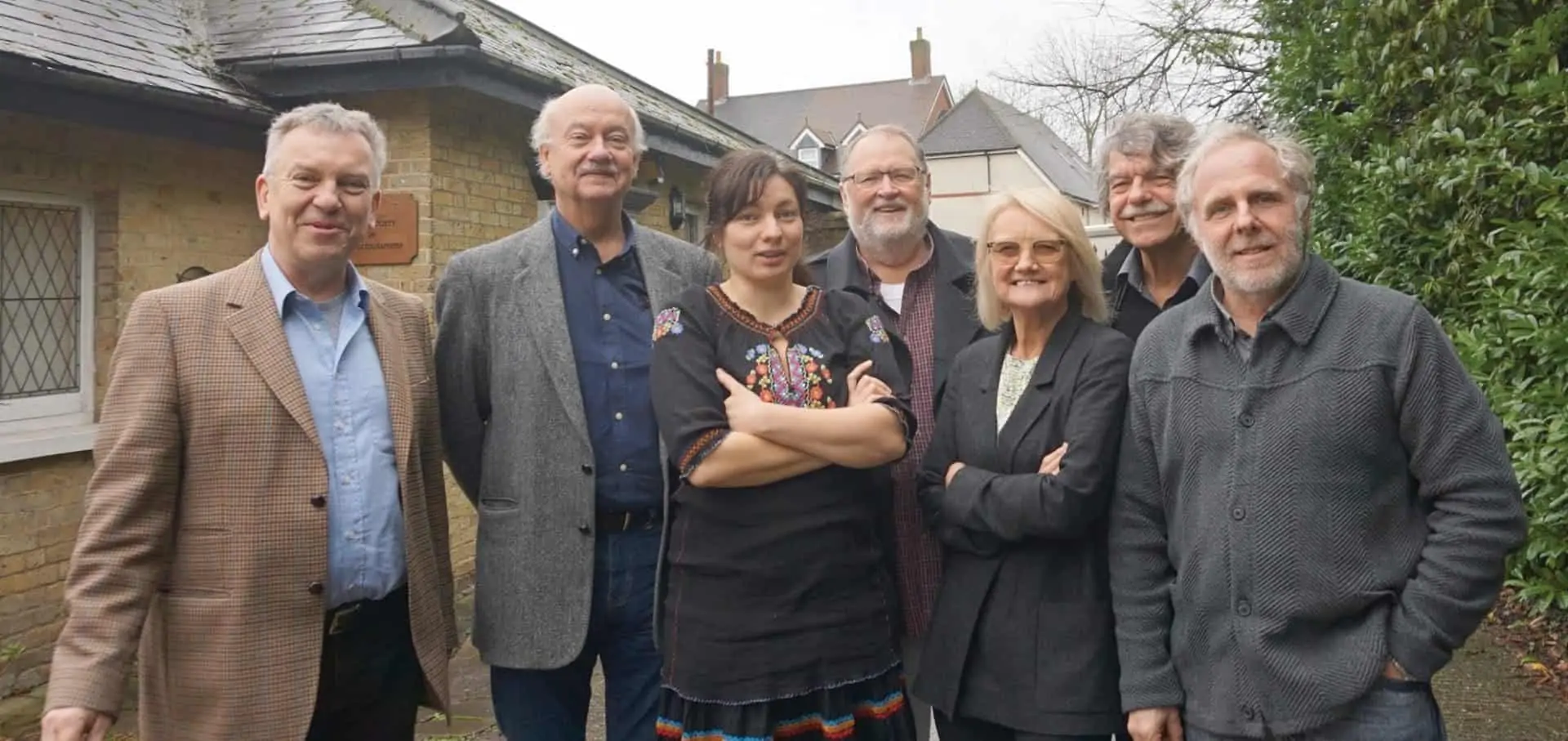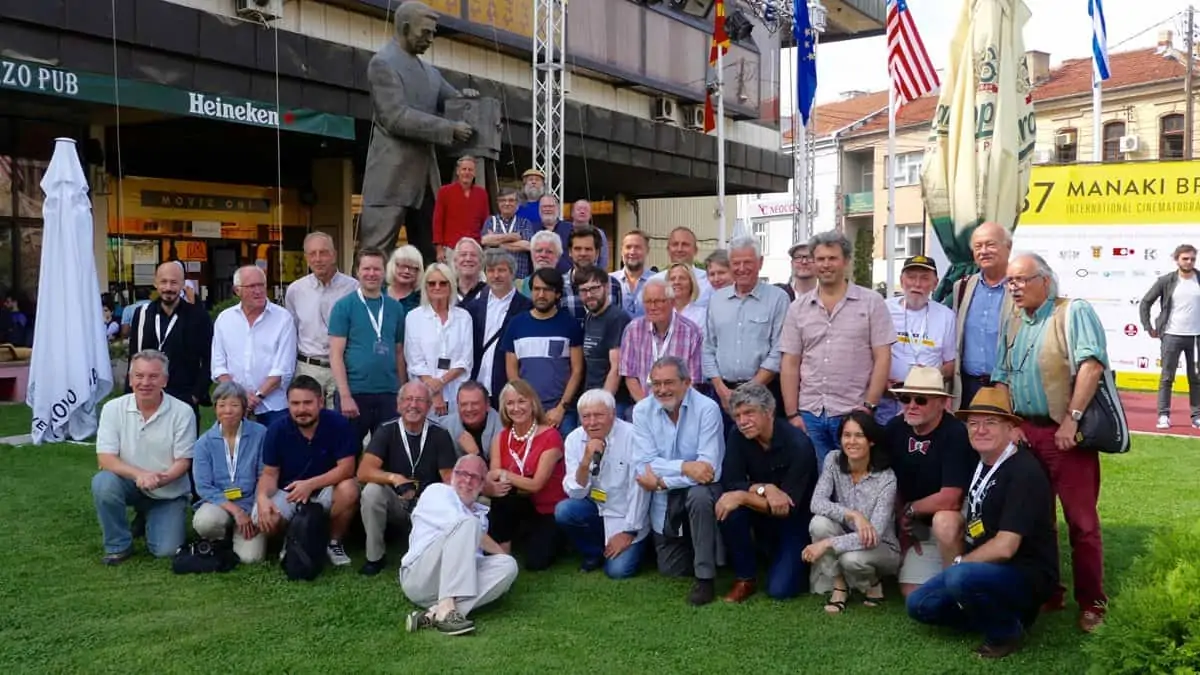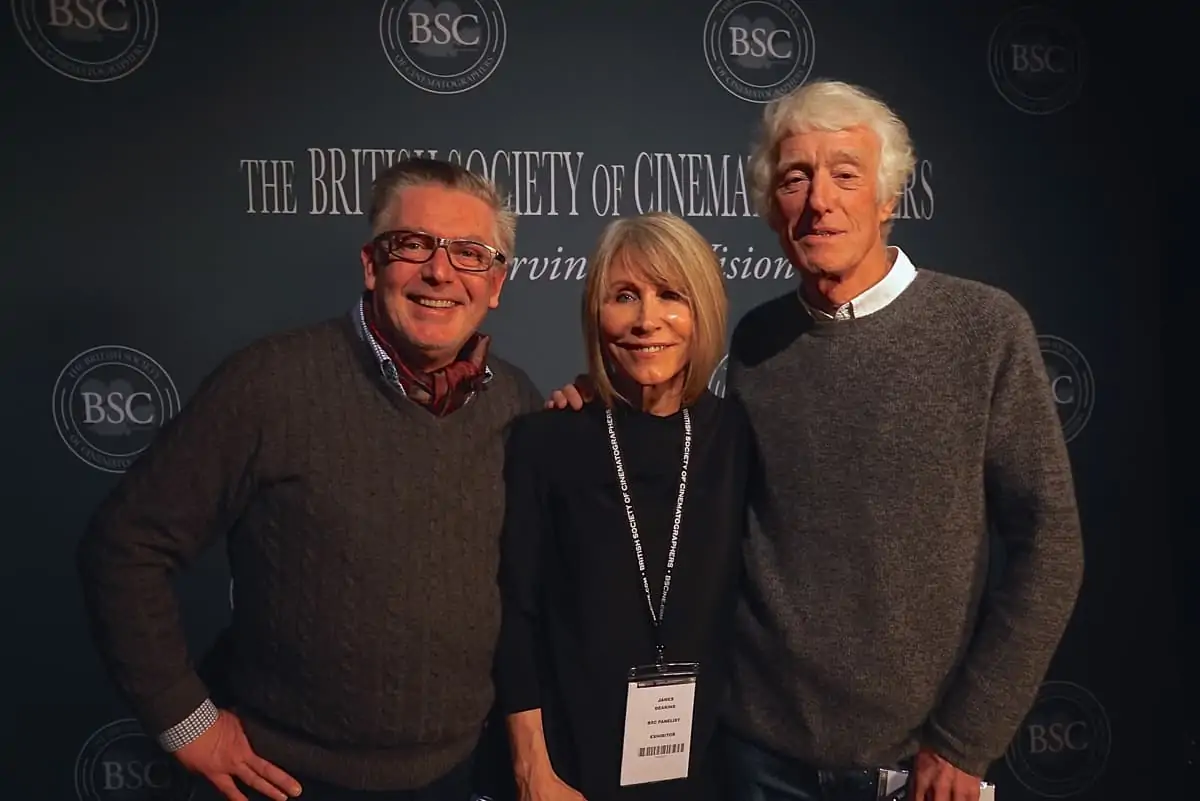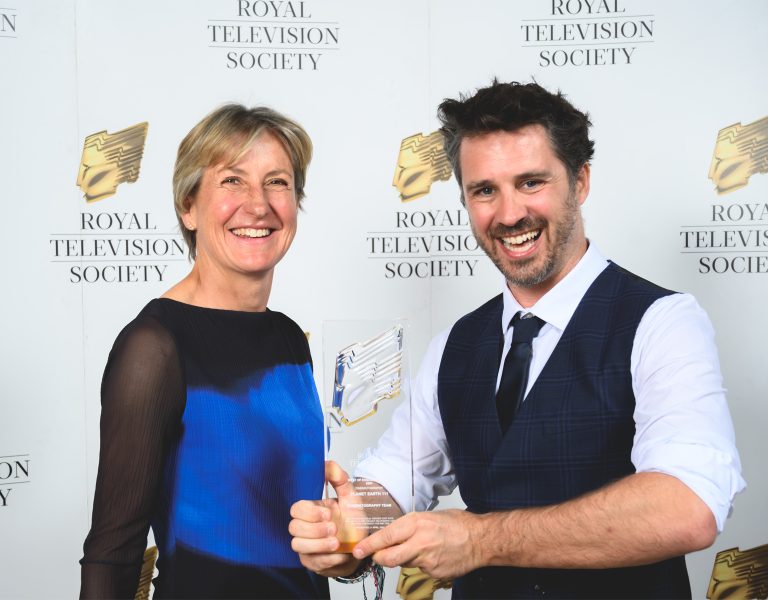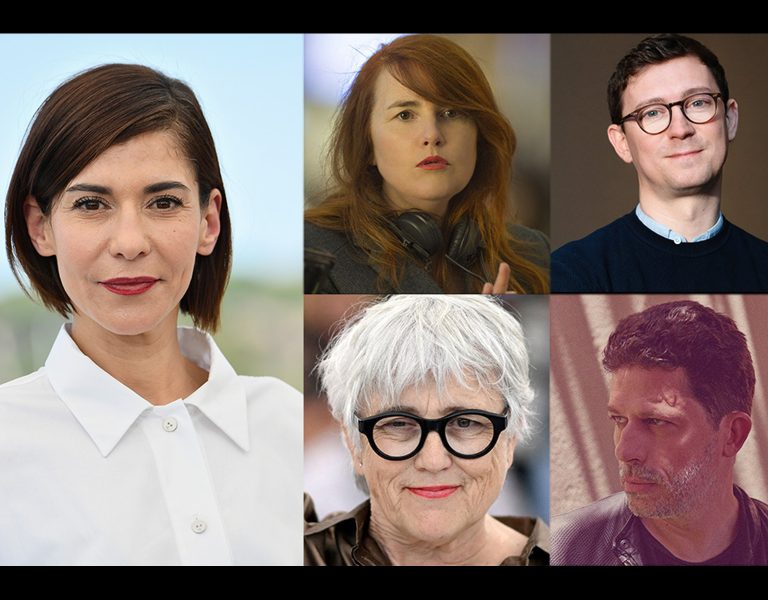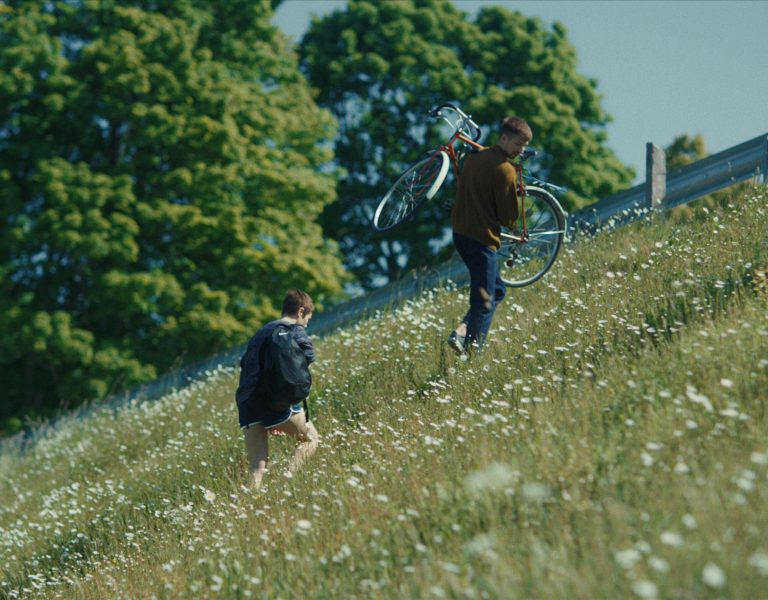IMAGO and ASC Join Forces
Kees van Oostrum ASC, the president of the American Society Of Cinematographers, announced during the Camerimage 2019 opening ceremony in Torun, Poland, Saturday November 9th, that the Board of the American Society of Cinematographers ASC, has decided to join IMAGO as an associate member, an important step in increasing international collaboration.
International collaboration and the exchange of information, knowledge and experience between international cinematographers are essential for the good development of the art of cinematography – for IMAGO, the International Federation Of Cinematographers, and ASC, the American Society of Cinematographers, working together is of paramount importance.
To have the ASC as a new member of IMAGO and all ASC members integrated as part of IMAGO´s strong international family of cinematographers, is an immensely valuable step forward for IMAGO and for all cinematographers worldwide.
Cinematographers have numerous common challenges, and the fact that the ASC now joins forces with the global community of cinematographers means that we all stand vastly stronger when in solidarity, and we will work to overcome those challenges for the benefit of our art.
IMAGO at Camerimage 2019

IMAGO and its members were strongly present during Camerimage in Torun, Poland.
Again we must congratulate Marek Zydowicz, Kazik Suwala and their great team with the success of moving from Bydgoszcz to Torun, the city where Camerimage was originally started in 1993 and held until 1999.
IMAGO arranged four important events during Camerimage this year: The IMAGO Technical Committee conference with manufacturers, the ASC/IMAGO/Netflix Conference discussing international film production and Netflix technical requirements, the IMAGO Diverse Voices Panel, and the IMAGO Central European Cinematographer´s Conference.
IMAGO/ASC/NETFLIX SEMINAR “Closing the Gap” by Simon Woods, recipient of the ACS Drew Llewelyn Scholarship (Australia)
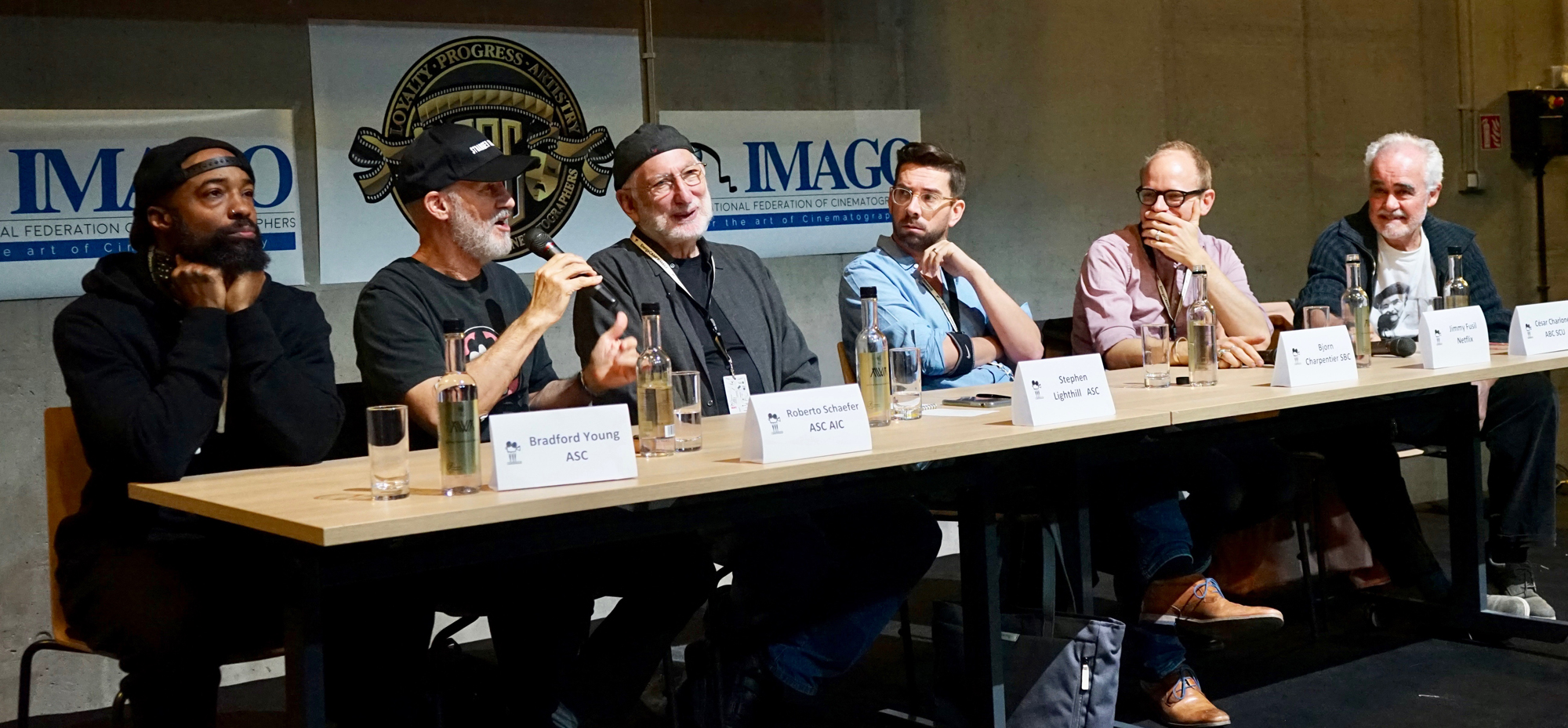
Chaired by Stephen Lighthill ASC, this discussion pivoted around the rapid changes facing cinematographers related to distribution via streaming. Netflix’s 4K requirements took some adjustment time and it seems HDR is no longer a “future format” but right here, right now.
On the film Red Sea Diving Resort, DP Robert Schaefer ASC AIC was asked to go back and do another pass in HDR after the film had been already been shot in order to meet Netflix’s new standards. This raised many issues on the panel about the vast array of viewing systems now used by audiences ranging from big screen TVs, to laptops, to iPhones. Some statistics are suggesting that as much as 40 percent of streamed content is being consumed on iPhone in bright ambient conditions. From the audience Geoff Boyle NSC noted that this throws a massive spanner in the works when it comes to the conditions we generally use for grading – a dark room, calibrated monitor, large screens – the exact opposite to how many shows will be viewed. But what can we do? The amount of variables makes the problem highly complex. Cinematographers cannot be asked to be “less precious” as this is anathema to any professional artist. Jimmy Fusil, Netflix manager of creative technologies, was doing his best to show his support of cinematographers and their vision. There is no doubt that streaming delivery is changing the whole paradigm of film distribution. Netflix is simultaneously grappling with the fast changes in end-user screen technology while at the same time trying to support the artist vision of the cinematographer. Not an easy task.
The second major topic covered was the role of Netflix as educator and industry leader, which includes maintaining standards in both working conditions and diversity, as essentially the “producing studio” of the project. While Netflix resists being the body that “makes the rules” on set, they are in a position to influence producers regarding diversity and inclusion, working hours, and maintaining safe and fair working conditions on set. Some of these standards have been communicated to crews and HoDs in pre-preproduction. The Netflix/ASC/IMAGO Conference creates a type of communication and openness that strengthens the bond and understanding between Netflix and IMAGO´s member cinematographers, and we look forward to continuing this good and necessary openness.
The IMAGO Central European Cinematographer´s Conference
Moderated by Nigel Walters BSC and Michael Neubauer BVK, 24 cinematographers from Russia, Estonia, Latvia, Ukraine, Poland, Germany, Britain and Slovakia came together to discuss common challenges and how we, in united collaboration through IMAGO, can work to solve the challenges.
IMAGO has two major work areas in 2020: first to work to implement that cinematographers shall be a natural and integrated part in any grading or post work related to their images, and secondly a campaign to get excessive working hours in film production down to a normal and acceptable standard.
Cinematographers need to regain control of their images. Increasingly, cinematographers are not invited to the grading of their own images, too often not even informed about grading going on, and they experience their images being cropped and changed in post beyond recognition. This is unfortunately also often happening when national archives restore and digitise our film heritage – the cinematographer of the film being restored is too often not even informed about the work being done, and even less often invited to the grade to help supervise the re-grading and restoration of the cinematographer´s own images.
Archivists and restorers are highly experienced and skilled in their line of work, no doubt about that, but still, it is only the cinematographer who knows the original artistic intention of the mood, light and colours of their images, and who can successfully help recreate this original artistic intention during the grade and restoration.
The other campaign IMAGO will start in 2020, is to inform and work to reduce the daily and weekly work hours for cinematographers and our colleagues in the film production business.
15-17 hour days and 6-7 day weeks is increasingly and too often the standard and not the exception on film productions. Excessive work days reduces work safety, it hinders recruitment and diversity, and it reduces the quality of our images. In many places, like Scandinavia, average work hours on film production is 8, maximum 10 hour work days, and 5 day weeks.
Scandinavian film and TV productions competes amongst the most popular in the World, for instance right now the Nordic Noir series, but also compared to the number of films produced annually, Nordic films are amongst the most Award winning films in the World. In addition to managing to make award winning films having “normal work days”, Scandinavians produce films on also vastly smaller budgets than in many other Countries. So the claim we often are met with, that shorter days means higher cost, is highly questionable.
Unacceptably long working days/weeks is one of the most serious challenges for cinematographers and film workers also in Central European Countries the conference delegates concluded, and the attendants of the Conference asked IMAGO to seriously look into this important problem as soon as possible. It is of course not a problem just for cinematographers, it is a problem for all our good colleagues in the film business, it creates a health risk, family problems, it creates serious safety issues and it reduces the quality of our work. As BECTU so correctly points out in their extensive and important report from 2017, who can work safely and constructively with their “Eyes half shut”?
IMAGO Diverse Voices Panel by Simon Woods, recipient of the ACS Drew Llewelyn Scholarship (Australia)
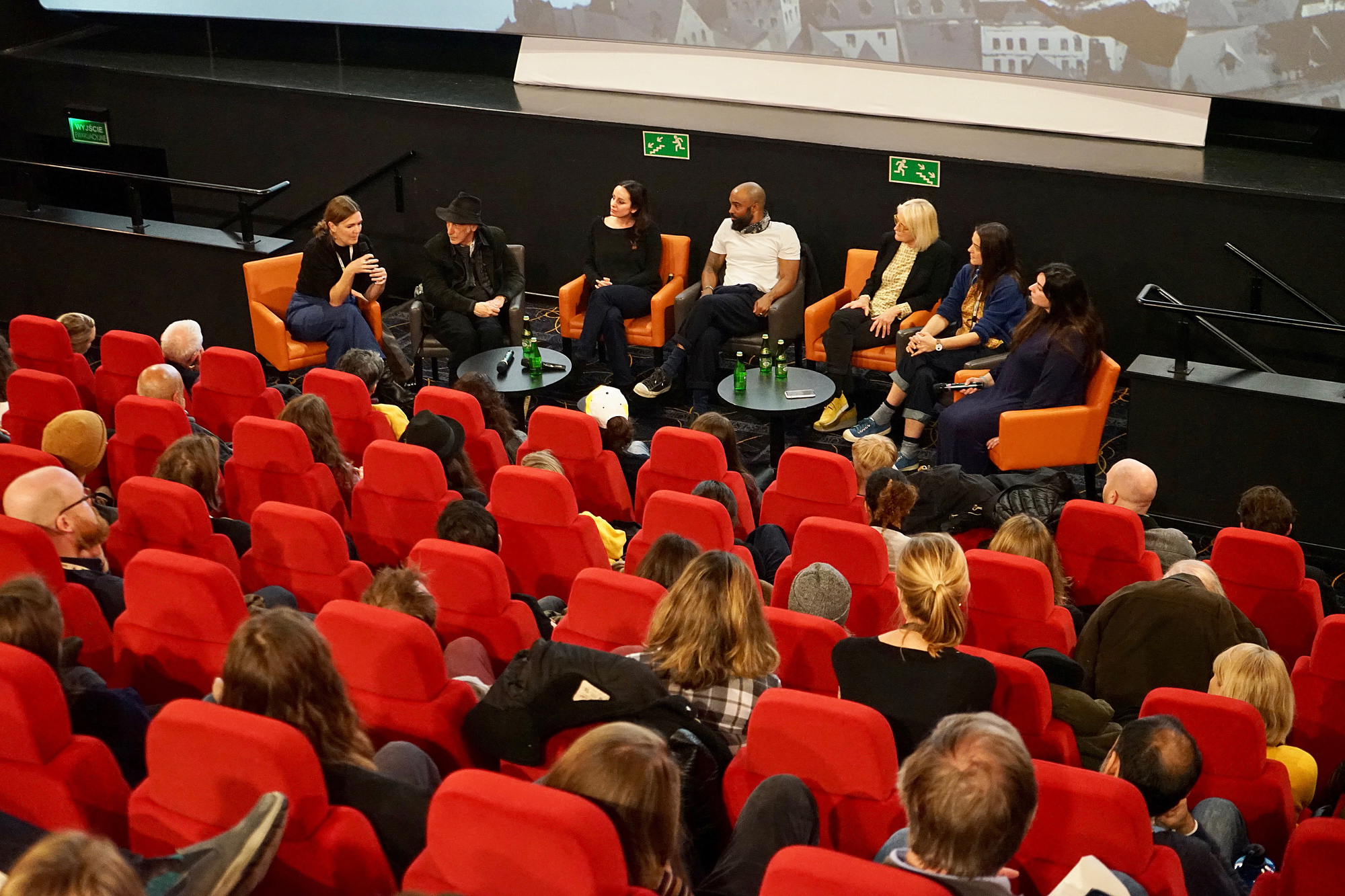
Now in its 4th year, the IMAGO Diversity Panel is a regular part of the Camerimage landscape, and technological changes aside, perhaps one of the most pertinent issues in the film industry at present. For this seminar, moderated by Estonian cinematographer Elen Lotman ESC, diversity related not only to gender but also to race and cultural background. Teams built around diverse perspectives, while initially requiring a bit more investment, can produce stronger outcomes.
At this year’s Camerimage, Bradford Young ASC never failed to deliver compelling and provocative perspectives on a range of issues. He suggested that there are two primary narratives in the film industry (speaking from an American standpoint): what he called the “white supremist’s main narrative”, and the “subversive narrative”. “The subversive group, the filmmakers already embedded in, and working in a community, do not have an issue with diversity.” So it was in the mainstream where the majority of the financing and decision making power is concentrated where diversity needs to be explored.
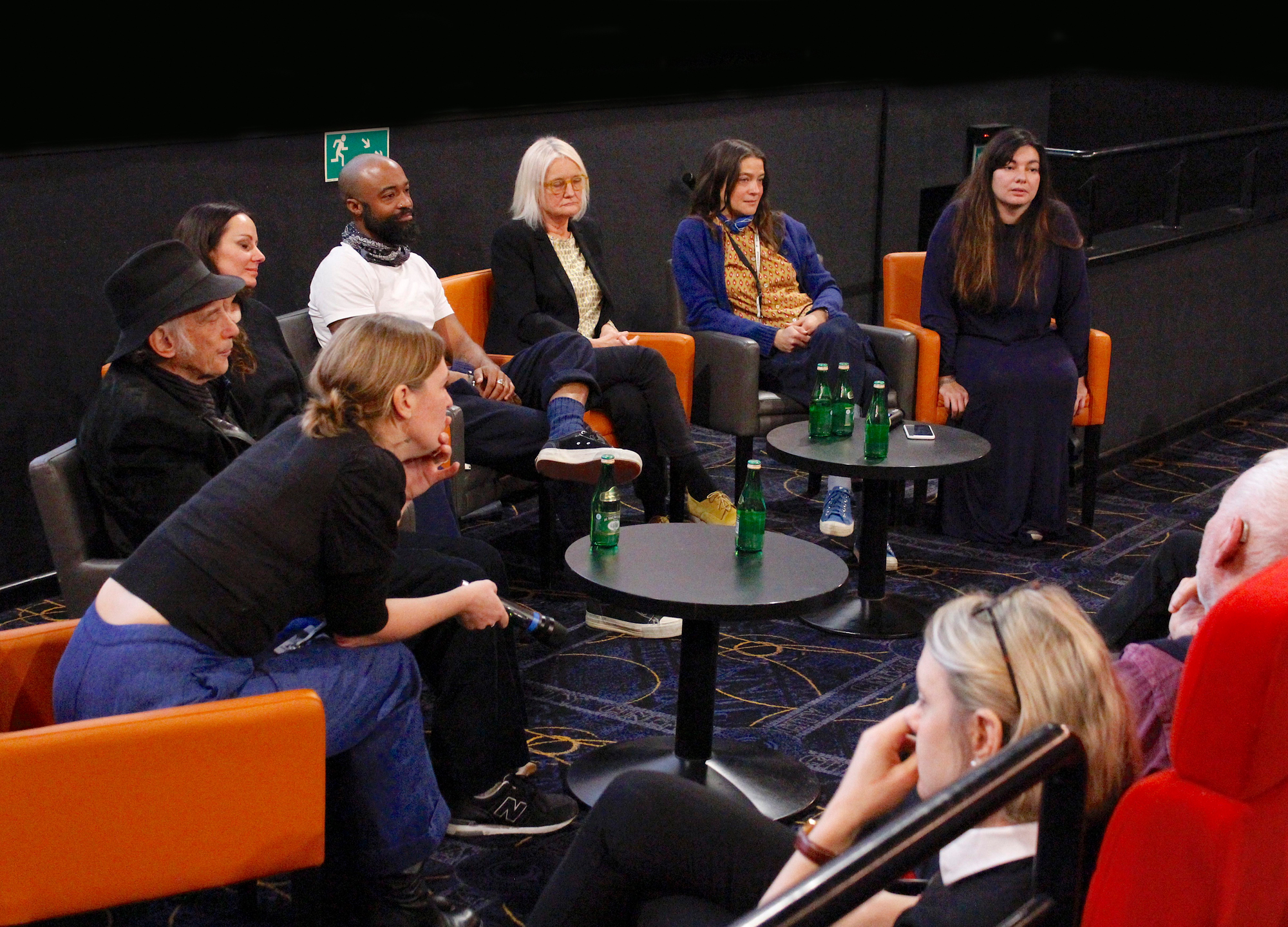
There is undoubtedly a growing awareness of the need to give more opportunities to female directors, cinematographers, and crew. But Natasha Braier ASC ADF was arguing against being defined as a female cinematographer. “I am a cinematographer, and I wish to be judged by my work, not by my gender”. For Ed Lachmann ASC, he reflected on a career that included many positive collaborations with female directors. He believed the process was often more productive because it tends to be more focused on the work and less on the male ego.
Bradford concluded by stating that, “women must lead this movement and create change,” and those already well placed within the industry must now create the space for that leadership and agency. As always the first step is awareness and having a vision for the future, as Elen Lotman said, “If you can see it, you can be it”. But even in Camerimage’s selections for competition this year, women in particular were sorely underrepresented. No female DPs in the main features competition, and of the 18 music videos being judged only one had a female DP. Change is happening, but slowly, and we all agree that inclusion at the elite level must be on merit alone. Ula Pontikos BSC pointed out that our cinematography societies in all countries needed to remain open and be user-friendly organisations and not exclusive (male) clubs. The point was also made that most of the esteemed cinematographers on the ASC list, while they are mostly male, are very often immigrants demonstrating that diversity often brings fresh perspectives and ways of seeing that are unique and different.
If you wish to receive more news about IMAGO´s world-wide work for cinematographers, please sign up for our newsletter at www.imago.org

